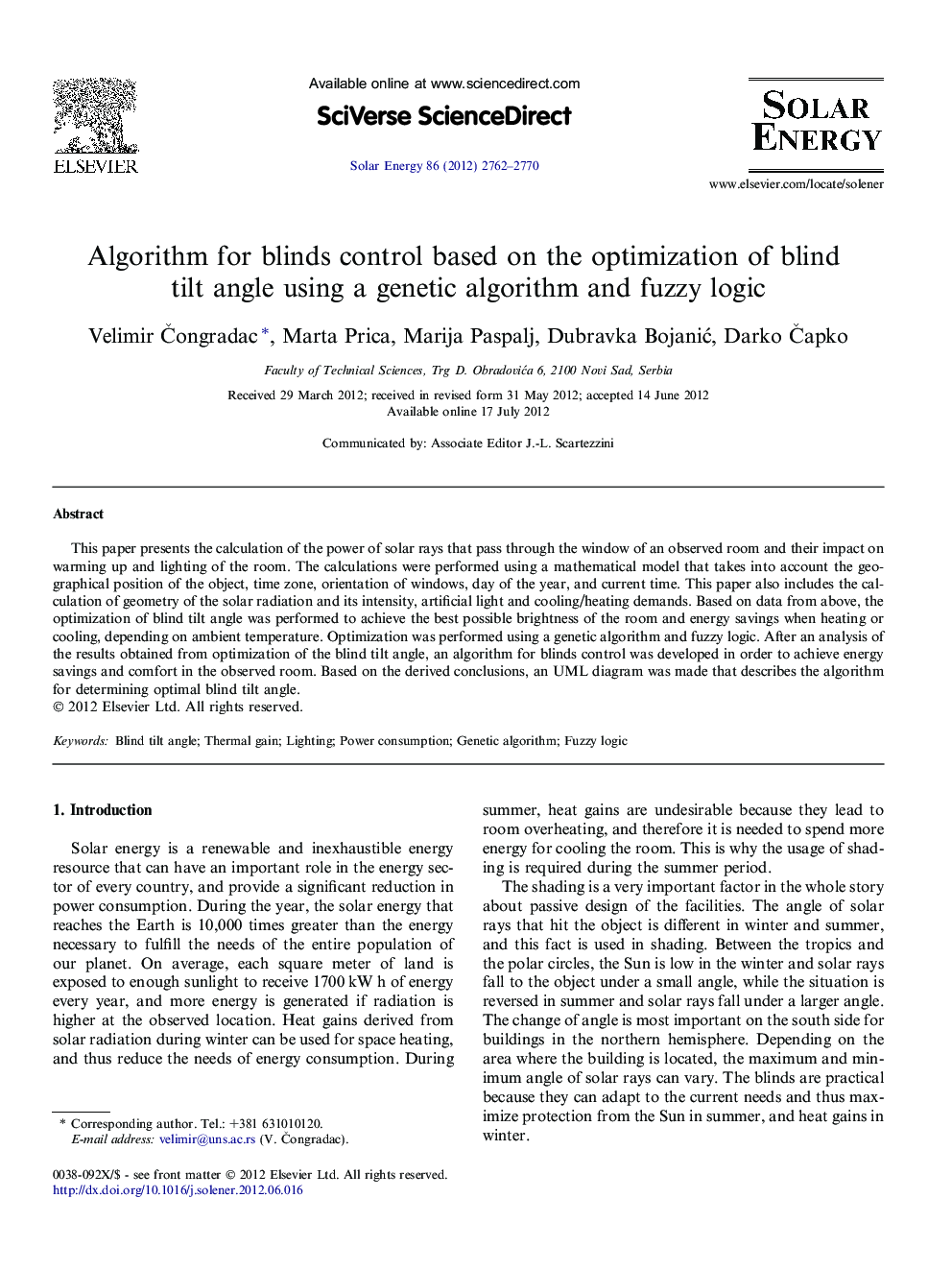| Article ID | Journal | Published Year | Pages | File Type |
|---|---|---|---|---|
| 1550927 | Solar Energy | 2012 | 9 Pages |
This paper presents the calculation of the power of solar rays that pass through the window of an observed room and their impact on warming up and lighting of the room. The calculations were performed using a mathematical model that takes into account the geographical position of the object, time zone, orientation of windows, day of the year, and current time. This paper also includes the calculation of geometry of the solar radiation and its intensity, artificial light and cooling/heating demands. Based on data from above, the optimization of blind tilt angle was performed to achieve the best possible brightness of the room and energy savings when heating or cooling, depending on ambient temperature. Optimization was performed using a genetic algorithm and fuzzy logic. After an analysis of the results obtained from optimization of the blind tilt angle, an algorithm for blinds control was developed in order to achieve energy savings and comfort in the observed room. Based on the derived conclusions, an UML diagram was made that describes the algorithm for determining optimal blind tilt angle.
► Calculation of power of solar rays that pass through the window. ► Power of solar rays impact on warming up and lighting of the observed room. ► The optimization of blind tilt angle. ► Optimization was performed using a genetic algorithm and fuzzy logic.
